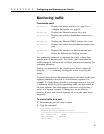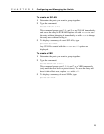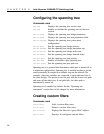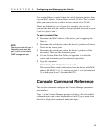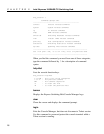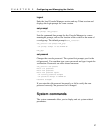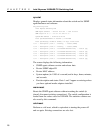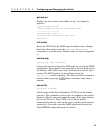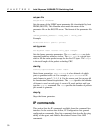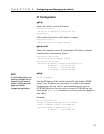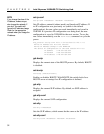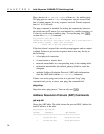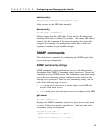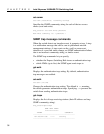
29
Configuring and Managing the Switch
CHAPTER 2
get-last-err
Displays the most recent system failure, if any, for diagnostic
purposes.
SYS_console>get-last-err
System information since the last hardware reset
————————————————————————
Software resets number : 0
The system never encountered a fatal error
SYS_console>
init-nvram
Resets the NVRAM on the SNMP agent to default values. Changes
don’t take effect until you use the warm-reset or cold-reset
commands or cycle the power. Default values are listed in Appendix
A.
set-line-slip
set-line-slip {9600|19200|38400}
Changes the console serial port to SLIP mode for out-of-band SNMP
management. The argument to the command is the new baud rate for
the interface. SLIP can be used with a terminal server but not with a
modem. The SLIP interface can be configured using the
set-slip-conf console command. The serial port can be returned to
console mode by pressing E three consecutive times from a
terminal.
set-sw-file
set-sw-file <
filename
>
Sets the name of the file downloaded by TFTP (trivial file transfer
protocol). This command is used in case of an update to the switch’s
firmware. The file name must match the name of the agent software
file on a TFTP server. When TFTP is used, the per-packet
retransmission time-out value on the server (not the switch) must be
increased to 10 seconds, since the SNMP agent must first erase its
flash EEPROM, which takes about 30 seconds.



